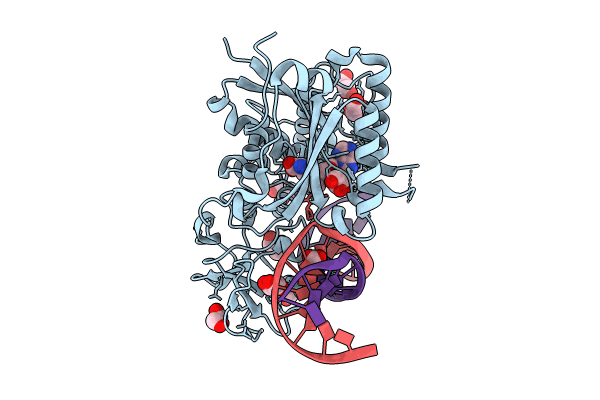
Deposition Date
2023-01-06
Release Date
2024-01-17
Last Version Date
2024-09-04
Entry Detail
PDB ID:
8C58
Keywords:
Title:
CpG specific M.MpeI methyltransferase crystallized in the presence of 5-hydroxycytosine and 5-methylcytosine containing dsDNA
Biological Source:
Source Organism:
Malacoplasma penetrans HF-2 (Taxon ID: 272633)
synthetic construct (Taxon ID: 32630)
synthetic construct (Taxon ID: 32630)
Host Organism:
Method Details:
Experimental Method:
Resolution:
1.85 Å
R-Value Free:
0.19
R-Value Work:
0.16
R-Value Observed:
0.16
Space Group:
P 41 21 2


